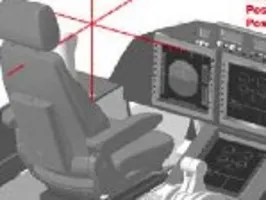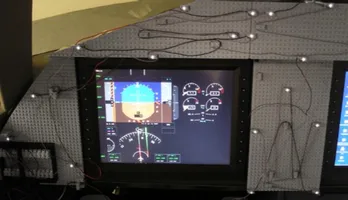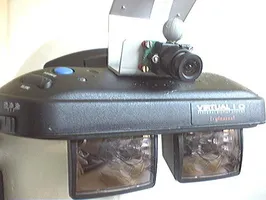AiRcraft

Entwicklung eines optischen Kopftrackingsystems zur Visualisierung eines Highway in the Sky mitels Augmented Reality in Privatflugzeugen.
| Start: | 2004/01/15 |
| Finish: | 2004/07/15 |
Keywords
Keywords:
Abstract
In light of the continuously increasing air traffic during the last decades, technical aids needed to support the pilot in navigation and flying has be- come more critical than ever to assure a flawless and safe flight. Primarily, this support is given to the pilot by a graphical presentation of sensor data to depict the actual flight condition (situational awareness). In this concern, visual displays have a crucial role to play nowadays. But the trend leads away from monitors on the centerpannel and head up displays to integra- ted head-mounted devices, which increase the pilot’s freedom of movement. But most of the devices used today are proprietary solutions, with many of them being based on electromagnetical tracking. In the application field of augmented reality, we encounter many of the same questions, but most of them in a more general context. Camera-based optical tracking is frequently applied in this field, due to some ma jor advantages over other tracking me- thods. The obvious drawbacks of optical tracking, such as highly complex and time-consuming image processing, may be compensated soon with the ongoing development of faster CPUs2 and GPUs3 . Moreover, by reducing a „one-fits-all“ solution to a problem-customized approach, several known problems of optical tracking can be avoided or at least reduced.
The goal of this thesis is to design a tracking system for the LFM’s4 flight research simulator by using existing techniques from the research field of augmented reality. The approach described here adapts solutions from existing systems to the special requirements of the cockpit environment, which leads in se- veral aspects to constraints that need to be intentionally taken advantage of whenever possible. Otherwise, the cockpit environment introduces several limitations which inhibit the application of existing solutions without modi- fication. Hence, a camera-based optical tracking approach was chosen, based on acitvely emitting fiducials in the infrared spectrum. The requirements of a platform-independent implementation as well as the future option to migrate the system to other cockpit types were complied with as much as possible throughout. Even though the requirements for an approval by federal flight authorities could not be taken into account, the system was nevertheless in- tentionally designed beyond the exclusive use in the flight simulator, which is reflected particularly in the fiducial design, by assuming a wide range of lighting conditions in the cockpit. The results presented in this thesis may serve the reader as support in choosing a tracking system tailored to a spe- cific problem, and showing some difficulties and possible approaches to their solution. For the tracking, we use a HMD-Mounted FireWire camera by PointGrey.
Videos
Publications
Team
Bearbeiter: Franz Mader
Aufgabensteller: Prof. Gudrun Klinker Ph.D.
Betreuer: MartinBauer, MartinWagner, HesamNajafi
Abgabedatum: 15.07.2004
Location

